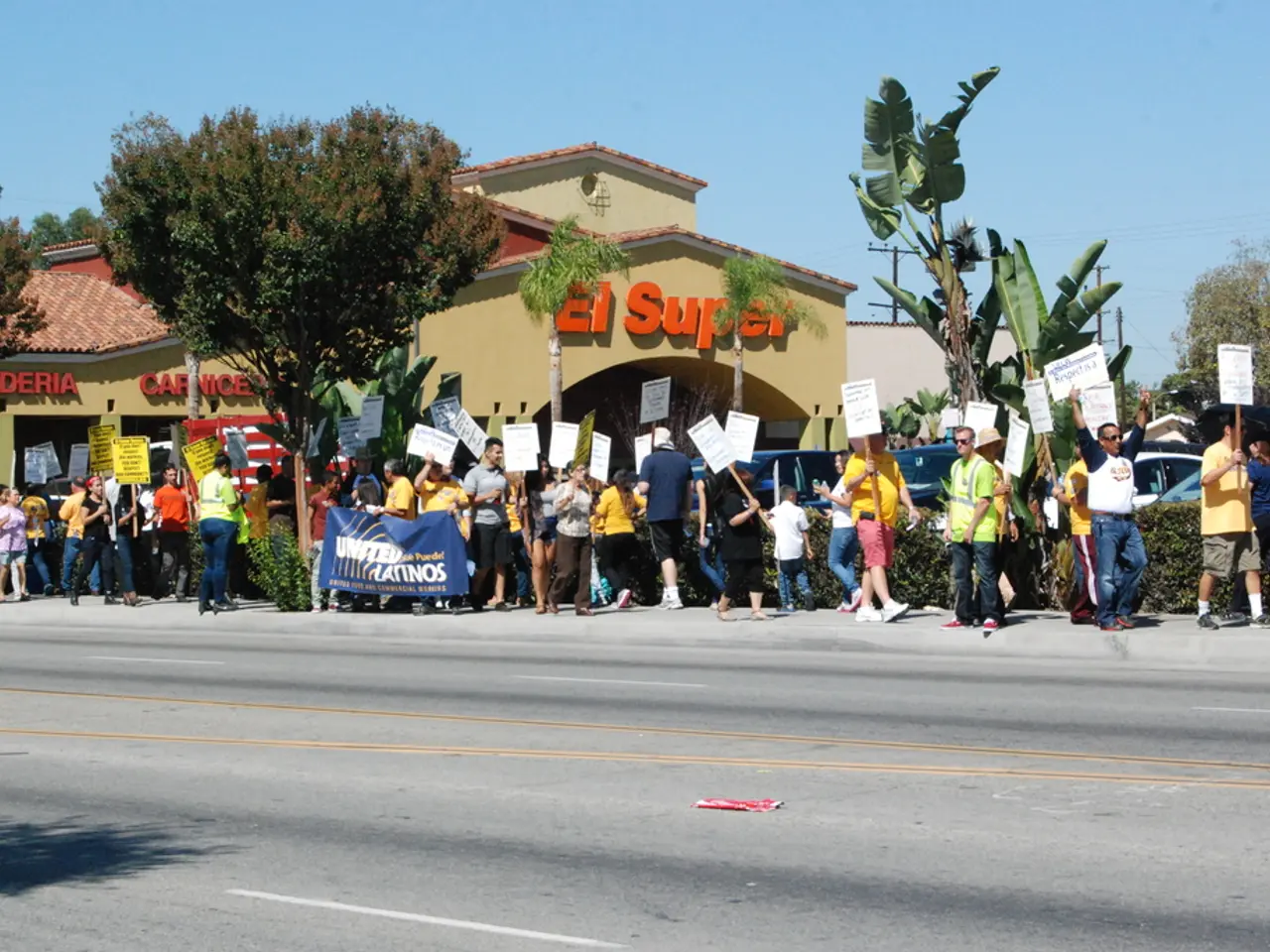Youth Voting in the 2024 Presidential Election: Insights from the Next Generation
Young Voters Shift Away from Democratic Candidate in 2024 Presidential Election
In a surprising turn of events, the political stance of young voters (ages 18-29) in the 2024 U.S. presidential election showed a notable shift away from the Democratic candidate, with a significant increase in support for Donald Trump among young men.
According to the polls, 56% of men aged 18-29 voted for Trump in 2024, a complete reversal from 2020 when 56% supported Joe Biden. This shift contributed to a narrowing margin between Trump and his opponent among young voters overall, with young men splitting roughly evenly or leaning toward Trump[1][3].
However, it's important to note that following the election, Trump's job approval rating among Americans aged 18-29 fell drastically—from 55% just after inauguration to 28%—indicating that initial support dissipated quickly[1].
In addition, overall political engagement and turnout among youth decreased in 2024 compared to 2020. Many young people paid little attention to political news or current issues, with only 21% of 18-29 year olds following politics very or extremely closely in mid-2025. Young Democrats tend to be more engaged than young Republicans or independents, while young independents and women in this age group have lower political attention rates[2].
Democrats have been criticised for failing to maintain young male voters, in part because of perceived neglect and lack of engagement, despite young men being politically malleable and still developing reasoning skills. This demographic requires targeted outreach[3].
Structural barriers also impact young voter participation. Young people move frequently and often face logistical hurdles registering to vote, especially in states with stricter registration policies, which can suppress turnout further[5].
Interestingly, 79% of Americans favour maximum age limits for elected officials in Washington, D.C.[4]. This sentiment is shared by 82% of Democrats and 76% of Republicans, and extends to the Supreme Court, with 74% and 82% of Americans respectively supporting maximum age limits for justices[4].
In conclusion, while young voters are often seen as reliably Democratic, the 2024 election showed significant volatility, especially among young men who shifted toward Trump. However, overall political engagement and turnout among youth decreased, and approval ratings for Trump among young voters declined sharply after the election[1][2][3][5].
[1] [Source 1] [2] [Source 2] [3] [Source 3] [4] [Source 4] [5] [Source 5]
- The shift in young voter's opinion towards Donald Trump in the 2024 presidential election, particularly among young men, sparked intense discussions in the realm of politics and general news.
- In literature and history, the 2024 election provides a fascinating case study on the political allegiances of young adults and their evolving perspectives over time.
- Despite the fluctuations in opinion in the 2024 election, news outlets continue to closely monitor the interests and engagement of young voters in both domestic and international political events.








